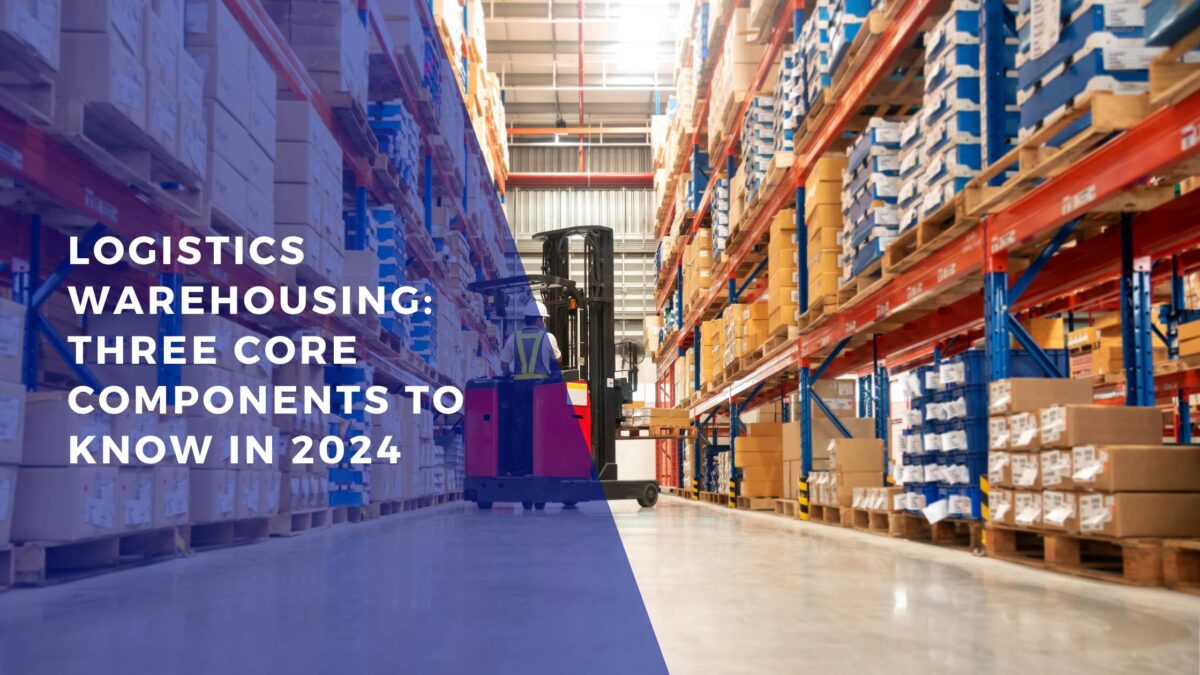In the ever-evolving supply chain management landscape, logistics warehousing is pivotal in ensuring the seamless flow of goods from production to the end consumer. As we step into 2024, the dynamics of logistics are undergoing significant transformations, driven by technological advancements, sustainability imperatives, and the growing importance of data-driven decision-making. This article delves into the three core components shaping the future of logistics warehousing in 2024 and beyond.
I. Advanced Technology Integration
In the fast-paced world of logistics, integrating advanced technologies has become a game-changer. Automation and robotics have emerged as crucial players in warehouse operations, streamlining processes and enhancing efficiency. Automated guided vehicles (AGVs) and robotic arms are now commonplace, handling repetitive tasks such as loading and unloading, thus reducing the need for manual labor and minimizing the risk of errors.
Artificial intelligence (AI) is revolutionizing inventory management in logistics warehousing. AI algorithms analyze historical data, predict demand patterns, and optimize inventory levels. This ensures that warehouses are well-stocked with the right products and helps prevent overstocking or stockouts. The result is a leaner, more responsive supply chain that can adapt to fluctuating market demands.
Furthermore, the Internet of Things (IoT) is crucial in real-time tracking and monitoring. Sensors and connected devices provide a constant stream of data, allowing warehouse managers to monitor the condition and location of goods. This real-time visibility minimizes the risk of losses, enables proactive decision-making, and enhances overall supply chain transparency.
II. Sustainable Practices in Warehousing
The year 2024 brings an increased focus on sustainability, and logistics warehousing is no exception. Companies recognize their operations’ environmental impact and actively seek ways to implement eco-friendly practices within their warehouses.
One of the critical areas of focus is the adoption of sustainable packaging materials. Traditional packaging often contributes to environmental degradation, but alternatives such as recycled and biodegradable materials are gaining traction. This reduces the carbon footprint of logistics operations and aligns businesses with consumer expectations for environmentally conscious practices.
Moreover, integrating renewable energy sources is becoming a standard practice in warehousing. Solar panels, wind turbines, and other renewable technologies are employed to power warehouse facilities. This shift towards cleaner energy reduces operational costs in the long run and positions companies as environmentally responsible entities in the eyes of consumers.
Strategies for minimizing the carbon footprint in logistics are also gaining prominence. From optimizing transportation routes to implementing energy-efficient lighting systems, warehouses actively seek ways to reduce their environmental impact. The emphasis on sustainability aligns with corporate social responsibility goals and contributes to long-term warehousing resilience in an era of increasing environmental awareness.
Sustainable Packaging Materials in Logistics:
Logistics companies are increasingly adopting sustainable packaging materials to reduce their environmental impact. Some examples include:
Recycled Cardboard: Using recycled cardboard for boxes and packaging materials helps minimize the demand for new raw materials and reduces the environmental footprint.
Biodegradable Plastics: Biodegradable plastics break down more efficiently than traditional plastics, reducing the long-term environmental impact.
Mushroom Packaging: Mycelium-based packaging is an innovative and sustainable alternative. It is made from agricultural waste and mycelium (the root structure of fungi) and is both biodegradable and compostable.
Reusable Packaging: Implementing reusable packaging solutions can significantly reduce waste. Crates, pallets, and containers designed for multiple uses contribute to a circular economy.
Plant-Based Packaging: Materials such as cornstarch, sugarcane, and bamboo can be used to create packaging that is both biodegradable and sourced from renewable resources.
III. Data-Driven Decision Making
In the information age, data has become a powerful asset for logistics warehousing. Data-driven decision-making revolutionizes warehouses’ operations, from optimizing inventory levels to predicting future demand trends.
Big data analytics plays a pivotal role in demand forecasting. By analyzing vast datasets, warehouses can identify patterns, correlations, and trends that might not be apparent through traditional methods. This foresight allows for better strategic planning, ensuring that warehouses are well-prepared to meet customer demands without excess inventory.
Real-time data is another critical component in optimizing warehouse efficiency. With the help of advanced tracking systems and sensors, warehouse managers can monitor the movement and status of goods in real-time. This not only enhances inventory visibility but also allows for quick decision-making in response to unexpected events, such as delays or disruptions in the supply chain.
Predictive analytics is shaping inventory management and planning strategies. By leveraging historical data and machine learning algorithms, warehouses can anticipate future demand, optimize stocking levels, and reduce the risk of stockouts. This proactive approach not only enhances customer satisfaction by ensuring product availability but also improves overall operational efficiency.
As we navigate the complexities of logistics warehousing in 2024, it is evident that the industry is at a crossroads of technological innovation, sustainability, and data-driven insights. Integrating advanced technologies such as automation, AI, and IoT enhances operational efficiency and responsiveness. Simultaneously, the growing emphasis on sustainability transforms warehouses into environmentally conscious hubs. Data-driven decision-making, powered by big data analytics and predictive tools, provides the intelligence needed to navigate the uncertainties of the modern supply chain.
Conclusion
In conclusion, the three core components—advanced technology integration, sustainable practices, and data-driven decision-making—are not isolated trends but interconnected facets of a holistic approach to modern logistics warehousing. Businesses that invest in these components position themselves for success in a rapidly evolving landscape, ensuring they are meeting current demands and well-prepared for the challenges and opportunities. As logistics continues to be a critical enabler of global trade and commerce, adapting to these core components is not just a choice but a strategic imperative for sustained growth and resilience.
At Accurate Warehousing and Distribution we are dedicated to achieving precision and efficiency in all operations. The company is ready to embrace the latest transformative trends by integrating cutting-edge technologies, prioritizing sustainable practices, and leveraging data-driven insights. Join us to experience these top-notch services and take your operations to the next level.
Name: Accurate Warehousing and Distribution
Address: 6585 Escondido Street Ste B. Las Vegas
Phone No: (702) 777-0300


